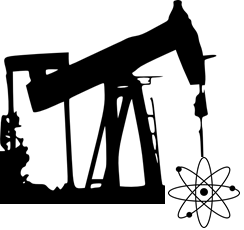A quantum resource theory is any model of restricted quantum information processing. The principles of quantum mechanics place certain limitations on what physical process are possible; for example the no-cloning theorem prohibits making copies of an unknown quantum source. However, in realistic scenarios, practical and non-fundamental constraints also limit what can be accomplished by a given quantum system. For instance, an experimentalist may only be able to maintain coherence in a quantum system for a short amount of time because of limited ability to mitigate environmental noise. Or, two separated quantum systems may only be able to communicate using classical signals since exchanging coherent quantum signals across macroscopic distances might be too resource-intensive. In these examples, certain features of a quantum system or quantum process become resources since they are beyond what the experimentalist can readily accomplish in the given context. Specifically, long coherence times is a resource in the former whereas quantum channels is a resource in the latter.

A general quantum resource theory is formally characterized by an allowable (or ”free”) set of operations \(\mathcal{O}\) and a free set of quantum states \(\mathcal{F}\); any state not belonging to \(\mathcal{F}\) is called a resource. The fundamental requirement of the resource theory is that the free operations act invariantly on the set of free operations; in other words, free operations cannot generate a resource state from a free one. The quantum resource theory framework is extremely broad, and most phenomena in quantum information can be characterized in a quantum resource theory, such as entanglement, faithful quantum communication, asymmetry, athermality, coherence, nonlocality, non-Gaussianity, and more. Our work explores different topics in the study of quantum resource theories, some of which includes the following.
- Identifying computational resources for the enhancement of quantum computing over its classical counterpart.
- Constructing general resource measures that can be applied in different resource theories and describing their operational meanings.
- Rigorously understanding how can quantum coherence be a useful resource for quantum information tasks, and developing methods to quantify the presence of coherence in some quantum process.
- Formulating the relationship between different quantum resources such as entanglement and coherence, and calculating optimal ways to exchange one resource for another?
- Understanding the types of quantum resources that allow for superactivation; i.e. the combining of two free states to generate a resource state?
References
-
- Chitambar, E. and Gour, G., “Quantum Resource Theories.” (2018) arXiv:1806.06107 .
- Zhao, Q., Liu, Y., Yuan, X., Chitambar, E., and Winter, A., “One-Shot Coherence Distillation: The Full Story.” (2018) arXiv:1808.01885.
- Chitambar, E. “Dephasing-Covariant Operations Enable Asymptotic Reversibility of Quantum Resources.” Phys. Rev. A. 97, 050301(R) (2018); doi:10.1103/PhysRevA.97.050301.
- Chitambar, E. and Hsieh, M.-H., “Relating the Resource Theories of Entanglement and Quantum Coherence.” Phys. Rev. Lett. 117, 020402 (2016); 10.1103/PhysRevLett.117.020402.
- Chitambar, E., and Gour, G., “Are Incoherent Operations Physically Consistent? — A Critical Examination of Incoherent Operations.” Phys. Rev. Lett. 117, 030401 (2016); doi:10.1103/PhysRevLett.117.030401.